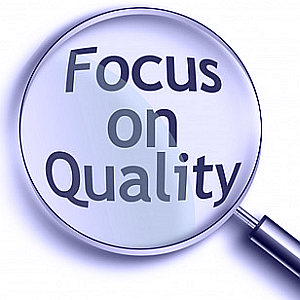HR Demand Forecasting Techniques to Follow in 2022

HR (human resources) department responsibilities go beyond searching and hiring new employees. Along with recruitment and employee management, HR specialists develop plans to provide a sturdy talent base for a company’s needs. Here’s where demand forecasting comes in handy.
In this article, we discuss the most popular HR demand forecasting techniques and how to cover essential prerequisites to make a forecast.
What is HR Demand Forecasting?
Demand forecasting is a process in which the needs of a company for a certain period of time are estimated. It can be used for forecasting information on the requirements for human resources (particularly employees with specific competencies). With this information, you can determine what the staffing levels should be and predict the number of people who will need to be hired in the near nearest future.
It is an essential practice that helps HR specialists fulfill the needs of the new workforce promptly. One of the main purposes of such forecasts is to choose the appropriate recruitment strategies for a number of individuals, holistically assess their performance, and make an informed business decision. Today’s HR specialists aren’t expected to perform this task alone – they must be embedded in a company’s culture and structure.
The four main resources used in human sources demand forecasting are the following:
- Basic data: the main sources of data are the company’s existing documents, operational and corporate information systems, databases, and internal web sites.
- Reports: these are usually derived from internal databases and external software packages. Examples include people analytics – such as talent management – and financial analysis. They may also be done in-house (e.g., workforce analysis) or through external consultants.
- Reports from external sources: this may include external sources of reports, such as market research firms, trade journals, and online databases.
- Participants: the final input is the experts within the organization. These may include HR staff or senior managers who have a good understanding of the needs of their workers and the way they are structured, as well as the company’s strategic goals. They are also aware of new trends that might affect the company’s future recruitment plans.
Why Organizations Forecast HR Demand?
Depending on the organization’s strategy and external factors, the demand for new talent may change. The following list includes but isn’t limited to the factors influencing the need for human resources:
- digitization of companies’ key operations may require upskilling and reskilling,
- retirement and increase of turnover rate,
- company’s growth,
- changes in employment trends,
- reduced productivity,
- market competition,
- other political or economical forces.
Forecasting HR demand helps organizations prevent high turnover and plan hiring or training of the workforce to supply the talent precisely when it’s needed.
Your organization should consider HR forecasting when it needs to predict the number of jobs needed to perform a particular task, reduce costs, define the level of satisfaction of the workforce, and reduce turnover or other business-specific needs.
5 HR Demand Forecasting Strategies
HR demand forecasting is an established practice and has some popular techniques recognized in the industry. Let’s look at them in detail.
Ratio Analysis
Ration analysis considers previous information to predict HR demand. The ratio represents the correlation of the workforce needed to the results achieved. Suppose your organization produced 10,000 units of some product for the past month, and the production department involved five full-time employees to reach this number. The ratio will be 10,000: 5 or 2,000:1, meaning 1 employee produces 2000 units/month. If you were to increase production to 20,000 units for the next month. With this ratio, you would know you need to hire five more employees.
This HR forecasting method can be applied also for defining how many salesmen you need based on your current revenue for a specific period and the desired income.
Managerial Analysis
The managerial analysis is a simple HR demand forecasting method that uses a ‘bottom-up’ or ‘top-down’ approach to decide on the required workforce.
The bottom-up approach implies department managers reveal their requirements to top managers. Then, top management estimates the overall need of employees based on the information from department leaders.
The top-down approach is the opposite. Top managers create a forecast and pass it to department heads for review.
These approaches can be used together for better results. Top managers and department leaders may meet to discuss the demand and compose the forecast together.
Delphi Model
Delphi’s HR demand forecasting method collects information about employees’ needs. An HR specialist picks a group of experts (managers and external specialists) and provides them with a questionnaire on a research topic. When the responses are analyzed, the expert panel receives feedback and goes through another round of questions. The procedure repeats until the experts reach an agreement.
The Markov Model
The Markov analysis is a statistical approach that allows HR specialists to predict potential changes in the future. HR managers track employee movements through various jobs within the organization and create a transitional probability matrix to forecast internal labor supply by position, age, gender, etc.
Workload Analysis
The workload analysis estimates how many employees the organization will need for a particular task based on the hours needed to perform the task. First, specialists predict activities for a given period and transform them into man-hours considering the average employee’s capability. Based on this data the HR demand forecast is calculated.
How to Make an HR Demand Forecast
The HR forecasting process aims to define what positions the company needs to fill, what skills the workforce should obtain to perform the job, and what the turnover rate will be to close the gaps efficiently.
The steps of HR demand forecasting include:
1. Current Job Market Analysis
HR forecasting begins with analyzing economic and social changes that affect employment. HR professionals should consider factors that change employment standards over the years. For example, the workplace trends that emerged due to the Covid-19 pandemic changed the employee demand for perks and working conditions.
2. Company’s needs evaluation
The company’s needs for talent vary depending on the type and size of the organization. So, HR specialists start by collecting and analyzing data from each department of the organization. To do this, the human resource department analyzes the knowledge and professional skills current employees possess and evaluates whether it’s enough to reach the company’s short- and long-term goals or not.
3. Defining employee turnover
HR demand forecasting can’t be complete without considering the turnover rate in the company. The turnover rate helps to predict what positions should be created or modified. It’s also crucial to take into account how many employees will retire.
4. Estimating HR demand
Once all the necessary data is collected, HR professionals use the HR demand forecasting techniques we’ve mentioned above to predict future changes in the workforce. The forecast helps to plan employment, upskilling, and other HR activities that will bring more benefits to the organization.
Conclusion
Each business is a living organism that changes and develops. So, HR leaders should know how to adjust to a company’s objectives when they change. Following the employment trends and predicting the workforce is essential for the efficient work of the HR department.
HR forecasting involves quantitative and qualitative analysis of current workforce size and capabilities. The techniques used to predict HR changes help organizations make proper decisions and adjust timely. Let’s revise the most popular of them:
- ratio analysis,
- managerial analysis,
- Delphi model,
- Markov model,
- workload analysis.











